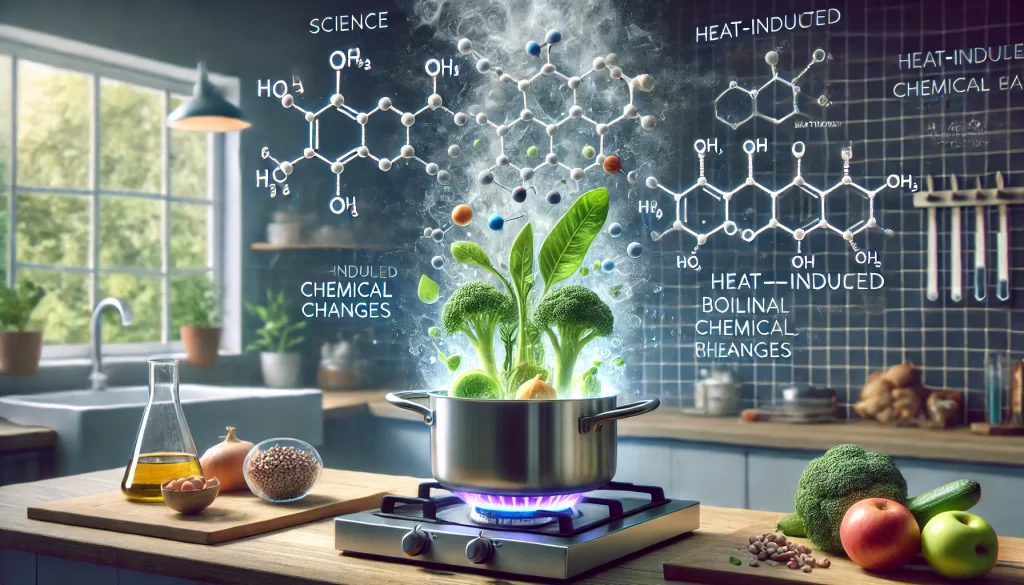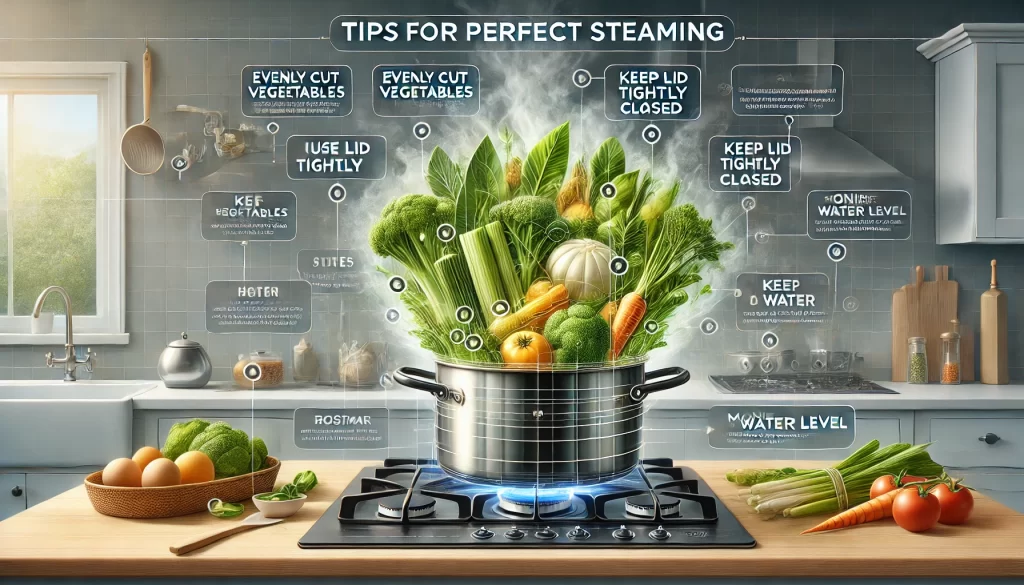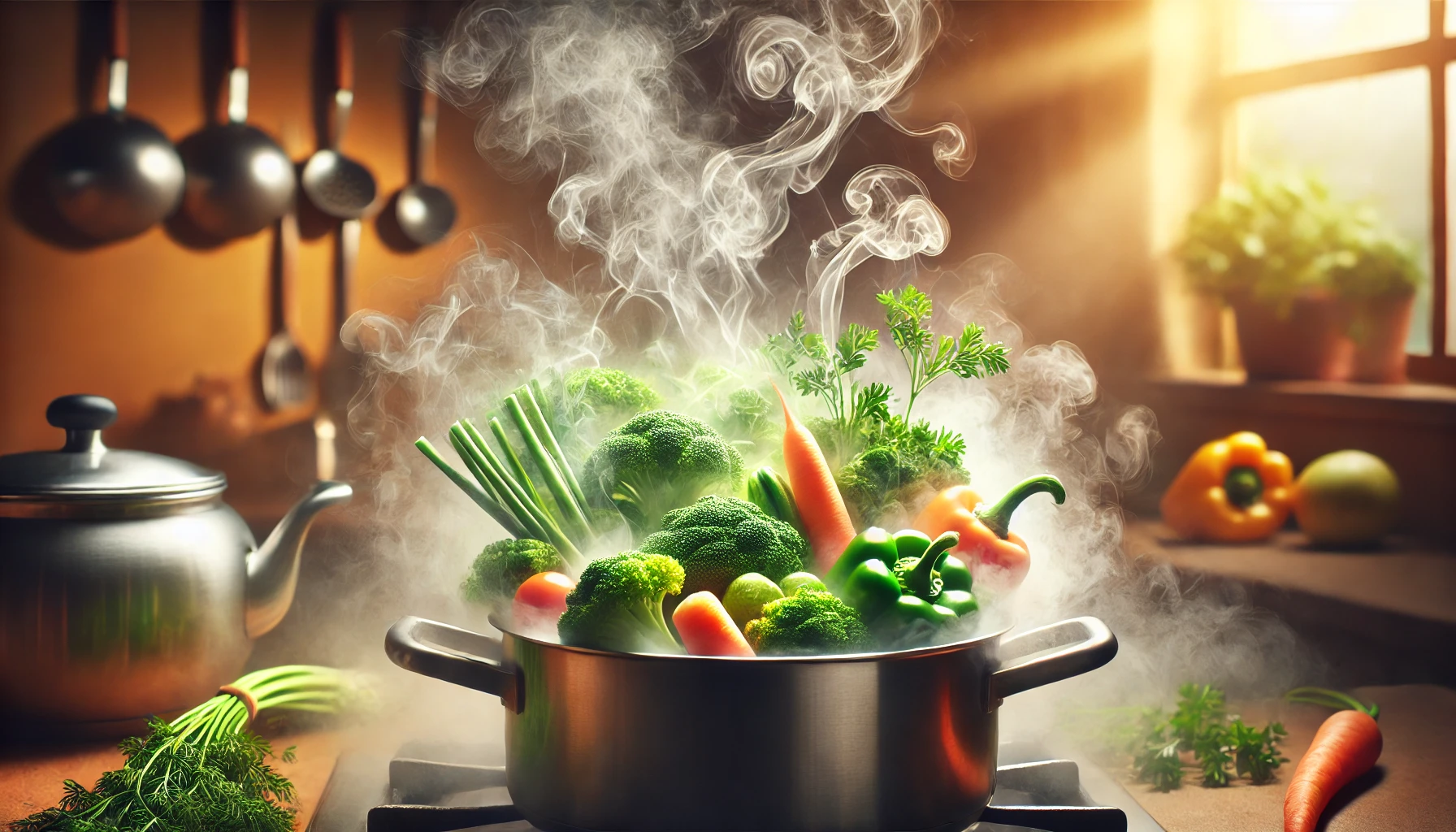Table of Contents
Steaming food is a chemical reaction that transforms your ingredients in ways you might not expect. This simple cooking method goes beyond just softening your vegetables or cooking your fish. It involves complex chemical processes that enhance the flavor, texture, and nutritional value of your meals. In this article, we’ll unlock the secrets behind these chemical reactions and explore how steaming can elevate your cooking. From understanding the science to mastering the technique, you’ll discover why steaming is one of the healthiest and most effective ways to prepare your food.
The Science Behind When You Steam Food Is a Chemical Reaction

When you steam food, a chemical reaction occurs that is both fascinating and beneficial. Steaming uses water vapor to cook food gently, which is key to preserving the natural structure and nutrients in your ingredients. But what exactly happens during this process?
Heat Transfer Through Steam
The first thing to understand is how heat is transferred when you steam food. Steam, which is simply water in its gaseous form, surrounds the food and transfers heat evenly. Unlike boiling, where food is submerged in water, steaming keeps the food in a more controlled environment. When you steam food is a chemical reaction that changes the food’s composition, making it more palatable. The heat from the steam causes the molecules in the food to move faster, leading to a gradual increase in temperature. This gentle rise in heat ensures that the food is cooked without breaking down too much, preserving its natural texture and nutrients.
The Role of Moisture
Moisture plays a critical role when you steam food. The steam keeps the food moist, which prevents it from drying out, as can happen with other cooking methods like baking or frying. This moisture also helps to break down the fibers in vegetables and proteins in meat, making them tender and flavorful without losing their nutritional integrity.
The Chemical Reactions at Play
When steam food is a chemical reaction that involves several processes, each contributing to the final taste and texture of the food. Let’s dive deeper into these reactions to see how they work together.
Denaturation of Proteins
One of the primary chemical reactions that occur when you steam food is the denaturation of proteins. Denaturation is the process where proteins in the food unfold and then refold into a new structure. When you steam food is a chemical reaction where heat causes the breakdown of complex molecules. When you steam food is a chemical reaction that retains the vibrant color of vegetables. This happens when heat is applied, and it’s responsible for the change in texture in foods like meat, fish, and eggs. When you steam food, this reaction happens slowly and evenly, ensuring that the food remains tender and juicy.
Gelatinization of Starches
Another important reaction is the gelatinization of starches. When you steam foods like potatoes, rice, or other starchy vegetables, the heat causes the starch molecules to absorb water and swell. When you steam food is a chemical reaction that activates enzymes, giving food a richer taste. When you steam food is a chemical reaction that can be both healthy and delicious.
Preservation of Nutrients
Steaming is also a chemical reaction that helps preserve nutrients. Because the food is not submerged in water, water-soluble vitamins like Vitamin C and B vitamins are retained better than in boiling. Additionally, the lower cooking temperatures prevent the breakdown of sensitive compounds, ensuring that the food you eat is as nutritious as possible.
The Benefits of Steaming Food
Steaming food is a chemical reaction that offers numerous benefits, making it one of the healthiest ways to cook. Here are some reasons why you should consider steaming as your go-to cooking method.
Retains Natural Flavors
One of the most notable benefits of steaming is that it retains the natural flavors of the food. Because the food is cooked gently and evenly, the flavors are concentrated, and there is no need to add excessive seasonings or fats to make the food taste good. This makes steaming ideal for those looking to enjoy the pure, natural taste of their ingredients.
Healthier Cooking Option
Steaming is a healthier cooking method because it doesn’t require any added oils or fats. When you steam food, you’re relying on water vapor to cook your meal, which means fewer calories and less unhealthy fat. Because of this, it’s a great option for people seeking to keep a healthy diet or are watching their weight.
Easier Digestion
The chemical processes that occur when food is steamed may facilitate easier digestion. When you steam food is a chemical reaction that gently cooks ingredients without added fats. The gentle cooking process breaks down tough fibers in vegetables and proteins in meat, making them easier for your body to process. This is particularly beneficial for those with sensitive digestive systems or those looking to improve their overall gut health.
Also Read: Mechanical Waves Require What To Travel
Tips for Perfect Steaming

Steaming food is a chemical reaction that requires some practice, but with a few simple tips, you can get it right every time.
Use the Right Equipment
To steam food effectively, it’s essential to have the right equipment. A steamer basket, a bamboo steamer, or an electric steamer can all do the job well. Make sure your steamer allows the steam to circulate freely around the food, ensuring even cooking.
Don’t Overfill the Steamer
Overfilling the steamer can lead to uneven cooking. When you steam food, make sure there is enough space between pieces for the steam to circulate. This will ensure that all parts of the food are cooked evenly.
Timing is Everything
When you steam food, timing is crucial. Oversteaming can cause the food to become mushy and lose its natural flavor and texture. Under-steaming, on the other hand, can leave the food undercooked. Follow recommended steaming times for different types of food to get the best results.
From the preservation of nutrients to the tenderizing of proteins, each chemical reaction that occurs when you steam food contributes to a meal that is both nutritious and satisfying. So, the next time you’re in the kitchen, consider steaming and enjoy the benefits of this gentle, healthful cooking method.

